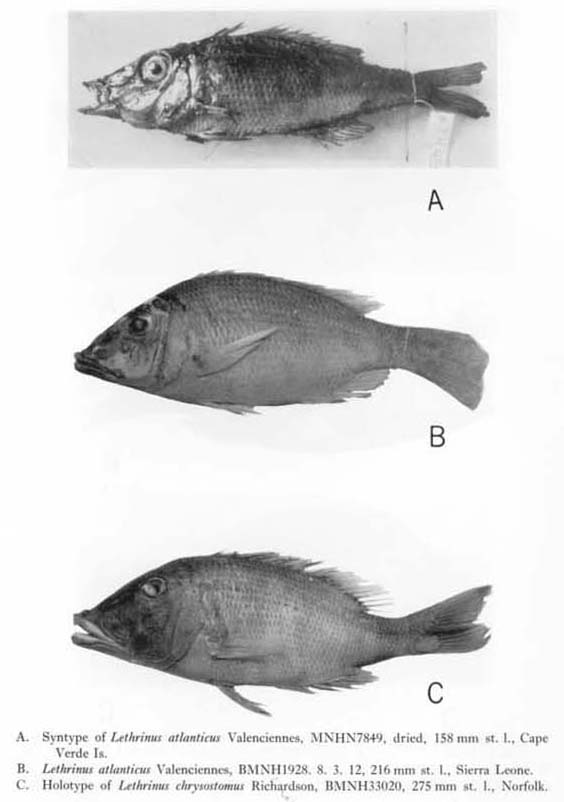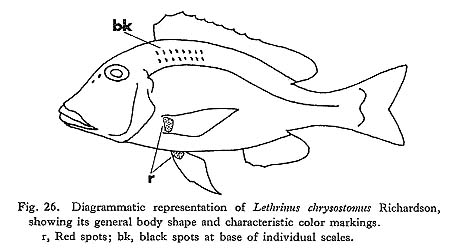V. DESCRIPTIONS
17. Lethrinus chrysostomus Richardson
17. Lethrinus chrysostomus Richardson |
 Plate 9 |
Lethrinus chrysostomus Richardson, 1848: 118, pl. 60, figs. 6, 7, Norfolk I.; Marshall, 1964: 200, pl. 26, fig. 212, Queensland.
Lethrinus imperialis De Vis, 1885: 146, Moreton Bay (Queensland).
Lethrinus xanthochilus (not of Klunzinger); Akazaki, 1962: 270, Norfolk I.
Specimens examined.
Holotype. —BMNH33020 (275 mm standard length) from Norfolk I.
BMNH77. 1. 10 (196) from Tonga.
BMNH79. 5. 22. 138 (249) from Eua.
UMUTZ52646 (320), 52645 (380), 52647 (410), 52648 (425), 52644 (450) from Norfolk I.
D. X, 9; A. III, 8; P1. 13; P2. I, 5; C. 8 + 7; L. lat. 44 to 46; Ltr. 5 or 6/i/13 to 15.
Proportional measurements of some specimens are shown in Table 17.

Head length about equal to or less than body depth. End of jaws usually on the vertical through posterior nostril. Interorbital area a little convex. Third dorsal spine longest. Longest anal ray about equal to soft anal base. 5 scale rows between lateral line and median dorsal spines. Inner base of pectoral without scales. Lateral teeth of jaws strong and conical.
Color. —Head dark purple, operculum and body paler. Corner of mouth red. Area around eye, vertical rim of preoperculum, and upper corner of opercular slit also red. Purple line from eye forward along nostrils. Anterior half of each scale black. Fins orange, pelvic darker. Margin of spinous dorsal, pectoral and pelvic base, strong red.
Distribution. —Great Barrier Reef, Norfolk I. to Tonga Is. Restricted to East Australian area, but very common there.
Remarks. —The present species very much resembles L. amamianus both in body shape and in color patterns. Both species may be closely related and may have become counterparts to each other in northern hemisphere and southern hemisphere.
